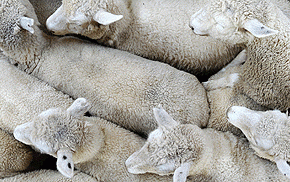
Content supplied by Beef+Lamb NZ
The Beef + Lamb New Zealand (B+LNZ) Economic Service annual stock number survey confirms what many predicted, following the recent prolonged and extensive drought.
The survey provides the country’s sheep and beef sector with a prediction of the productive base of livestock for the 2013-14 season.
While both sheep and cattle numbers fell – 1 per cent and 1.3 per cent respectively – it is the lamb crop that reflects the drought’s impact most significantly.
The export lamb slaughter for 2013-14 is expected to be 18.6 million head, a decrease of 8.5 per cent and the export cattle slaughter is forecast to decrease 2.7 per cent to 2.2 million head in 2013-14.
B+LNZ Economic Service Chief Economist, Andrew Burtt says the drought conditions affected ewe condition at mating and, consequently, scanning results were variable across the North Island.
“We’re expecting lambing percentages to be down by up to 20 percentage points in the regions worst hit by drought in the north. The South Island fared better and scanning results were down only a few percentage points – and that’s against last season, which was favourable in the south.”
Overall, sheep numbers were down 1 per cent to 30.94 million head at 30 June 2013, compared to 31.26 million a year earlier.
Mr Burtt says breeding ewe numbers were also down 1 per cent overall, but the numbers in each island moved in opposite directions. “Ewe numbers in the North Island decreased by 2.7 per cent to 9.52 million, while South Island ewe numbers were almost static (+0.5%) at 10.69 million.
“Hogget numbers reflected a similar pattern – back 1.3 per cent overall, but down 3.5 per cent in the north and up 1 per cent in the south.”
Meanwhile, cattle numbers fell 1.3 per cent to 3.69 million head at 30 June 2013, from 3.73 million in 2012. “Again, the North Island figures tell the drought story, with numbers back 2.5 per cent – with particularly large decreases in East Coast and Taranaki-Manawatu – while the South Island’s cattle numbers rose 1.8 per cent.”
We welcome your comments below. If you are not already registered, please register to comment
Remember we welcome robust, respectful and insightful debate. We don't welcome abusive or defamatory comments and will de-register those repeatedly making such comments. Our current comment policy is here.